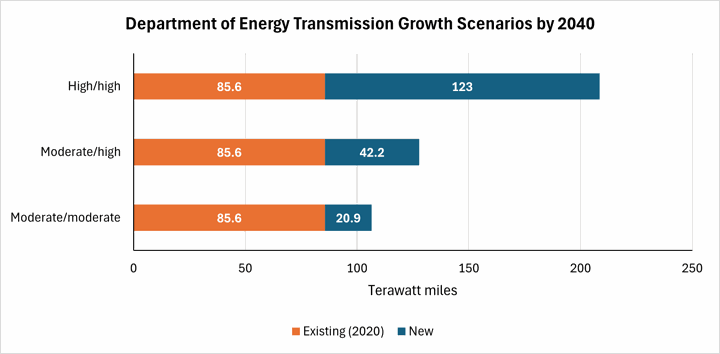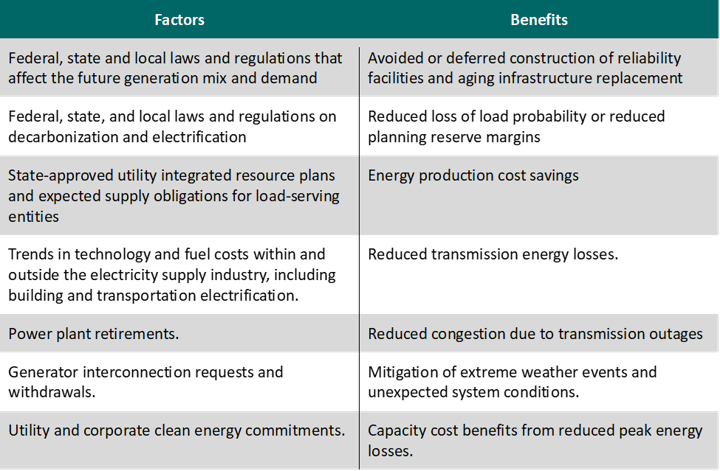
By Tarik Cetin, Senior Energy Analyst
Let’s think about the journey of electricity into the device you are using to read this piece. First, electricity is generated at a power plant. Then it finds its way to your town, to your home or business through a utility’s transmission and local distribution network. How about the natural gas that flows to your home or business to provide heating? In a similar way, it gets extracted from the ground, travels along an interstate pipeline to reach the local area and is delivered by a utility to a home or business through a local underground pipeline network. End users utilize these complex, far-reaching energy systems every day. These systems are regulated at the federal level by the Federal Energy Regulatory Commission (FERC), an independent government agency that many people know little about but that has a substantial impact on the United States’ energy infrastructure and our national decarbonization efforts.
What does FERC do?
FERC as we know it today has gone through many evolutions, but it is originally a product of the 1973 oil crisis. Formed in 1977 by the U.S. Congress, FERC regulates interstate transmission and transport of electricity, natural gas, and oil and the interstate wholesale sale of electricity and natural gas. The agency oversees transmission rates, sets reliability standards for transmission infrastructure, regulates wholesale natural gas and electricity markets, and certifies liquified natural gas (LNG) import and export facilities. These are all ultimately influential not only on energy costs, but also on the design of the energy infrastructure in the U.S. as well as its forward progression.
FERC is made up of up to five commissioners who are appointed by the President and confirmed by the Senate to staggered terms. In June 2024, the U.S. Senate confirmed three new commissioners : David Rosner (D), a former energy industry analyst at FERC, Lindsey See (R), former solicitor general of West Virginia, and Judy Chang (D), former undersecretary of energy and climate solutions for Massachusetts. They joined Willie Phillips (D) and Mark Christie (R), who have served as commissioners since December 2021 and January 2021, respectively.
FERC is increasingly impacting the direction of decarbonization efforts in the U.S. With a widespread focus on beneficial electrification, which includes the conversion of fossil fuel end uses to electric-powered technologies and the decarbonization of regional power grids, FERC’s governance of wholesale electricity markets and the planning process for interstate electric transmission systems will play a major role in determining how the grid of the future develops across the country. Two examples of important recent FERC decisions in this space are Order 1920 and Order 2023.
Order 1920
Issued by FERC in May 2024, Order 1920 is a new transmission and cost allocation rule by FERC with significant implications for regional power grid development and long-term transmission infrastructure planning. The rule introduces reforms in face of growing power grid capacity needs in the U.S. and lagging transmission line growth. The latest National Transmission Needs Study by the U.S. Department of Energy finds that U.S. power grid capacity may need to grow up to 144% by 2040 assuming high levels of electrification and clean energy penetration, while recent S&P Global and J.P. Morgan data show the U.S. transmission line growth declined from 4,000 miles added in 2013 to only 500 miles added in 2022.

Source: Brian Potter, How Cost Allocation Works for Transmission Lines ,Institute for Progress, https://ifp.org/how-cost-allocation-works-for-transmission-lines/, Accessed July 30, 2024.

Source: U.S. Department of Energy, National Transmission Needs Study, https://www.energy.gov/gdo/national-transmission-needs-study, October 30, 2023.
Order 1920 requires transmission planners to use a 20-year horizon for regional transmission expansion plans and update them at least every five years. It establishes seven factors that must be accounted for in regional grid planning and seven benefits that must be calculated when selecting regional transmission facilities.

The order introduces six-month engagement periods in which transmission providers must provide forums for negotiations with state regulators on the cost allocation methods and provide compliance plans with or without agreement from state regulators by June 2025, unless extended.
Order 2023
Issued by FERC in November 2023, is another important recent ruling with near-term and long-term implications for clean energy development. Order 2023 aims at easing a backlog of clean energy and storage resources seeking to interconnect to the power grid across the U.S. As part of the existing setup, a new generation resource is subject to a “first-come, first-served” interconnection study process. This study evaluates the proposed generation resource’s impact on the transmission system, and ultimately decides whether grid improvements are necessary for the new resource’s feasibility. This, in turn, means that developers often lack information regarding the cost burden they may have to undertake for related transmission network upgrades. In order to have the study completed, and in hopes of ultimately executing an interconnection agreement, a new generation resource must join the interconnection queue and wait for its individual turn. Considering lengthy interconnection study timelines and the high number of renewable and storage development projects of various sizes, the interconnection queue turns into a serious obstacle, and numerous speculative projects entering the interconnection queue in response to long wait times certainly does not help.
Order 2023 establishes financial commitments like increased study deposits and commercial readiness deposits for interconnection customers seeking to enter and stay in the queue. Withdrawing requests from the interconnection queue will now result in a penalty. By doing so, FERC intends to discourage speculative, commercially non-viable interconnection requests from the queue. More importantly, Order 2023 obliges transmission providers to use a cluster study process and evaluate multiple proposed generation resources at the same time. This is expected to reduce the waiting time by eliminating the inefficiencies that come with separate and sequential interconnection studies. Furthermore, Order 2023 introduces firm deadlines and penalties if transmission providers fail to finish interconnection studies on time.
Order 1920 and Order 2023 appear to be steps in the right direction for achieving beneficial electrification and decarbonization goals across the country. They are also good examples of why understanding FERC and its regulatory powers is important for ratepayers . Competitive Energy Services (CES) actively monitors FERC proceedings to highlight key issues and outcomes that impact the regions in which our clients operate. To understand how the changes in the state or federal regulatory landscape might impact your organization, please reach out to a CES Energy Services Advisor today.
Photo by Nathaphat
